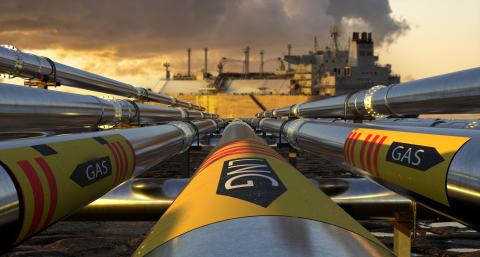Railway Executive Sees Powder River Basin Coal for What It Is: A Stranded Asset
poNine years ago, Burlington Northern Santa Fe Railway Company embarked on a campaign to improve its freight service in and out of the coal-rich Powder River Basin of Montana and Wyoming.
Times were good, the coal industry was booming, and BNSF was getting political pressure to beef up its Powder River Basin infrastructure to help meet the nation’s seemingly endless appetite for fossil-fuel energy.
“The administration and Capitol Hill strongly believed that our investment in our coal network was insufficient and that much more investment was needed if we were to meet the forecast of demand going forward,” Matthew K. Rose, the BNSF executive chairman, recalled the other day at the U.S. Energy Information Administration’s annual conference in Washington. “We invested heavily, and now the capacity and the operations of the PRB lines are very, very impressive.”
Then came Rose’s headline remark: “Less than 10 years later, I don’t anticipate that we’ll see that level of coal volume again. That leaves us with millions of dollars in investment in what will eventually be stranded assets.”
Say again? BNSF, the second biggest railroad in the country and the main regional rival to Union Pacific Railroad, the No. 1 rail company, sees no growth in the Powder River Basin coal industry?
That’s what the man said.
And BNSF isn’t alone. Union Pacific, which splits the Powder River Basin market with BNSF, reports similar hurdles, as noted in an item a few weeks ago on Forbes.com: “Even in late 2014, Union Pacific’s management was forecasting—and adding manpower and equipment for—a fantastic 2015. But so far, this year has proved to be a disappointment. The biggest surprise has come in coal. Electric utilities shifted en masse from coal to natural gas as gas prices dropped sharply in late 2014 and early 2015.”
THIS HARD RAILROAD INDUSTY REALISM STANDS IN CONTRAST TO PEABODY ENERGY’S UPBEAT INSISTENCE THAT A COAL MARKET UPTICK IS IMMINENT. One thing about Peabody, the largest private coal company in the world, is that it is consistent in its outlook—even if it is consistently wrong.
Burlington Northern Santa Fe, on the other hand, is a pragmatic company with pragmatic leadership (wholly owned by Warren Buffett’s Berkshire Hathaway) that sees nothing much happening to suggest Powder River Basin coal producers’ dreams will come true.
PRB coal is competitively priced, but its market falls short of what the region’s four major producers—Peabody, Alpha Natural Resources, Arch Coal and Cloud Peak Energy—need to achieve sustainable growth. The entire business model for the basin’s coal-production expansion turns on exports that would go overseas via as-yet unbuilt export terminals in the Pacific Northwest to increasingly difficult-to-find buyers who are looking today to other energy sources. Much to the detriment of U.S. coal producers, global seaborne thermal-coal prices are poised, by most accounts, to stay low for years to come.
Rose’s admission may not have been an easy one to make. He said PRB coal now accounts for about 20 percent of BNSF’s traffic, down from 25 percent, and that it is “the fastest-changing story in railroading.”
He noted also that U.S. electricity producers rely on coal today for less than 40 percent of their energy needs, down from 50 percent a decade ago, and that he expects further “significant volume disruptions” as energy markets continue to evolve, in part as a result of pollution regulations.
Rose noted also that the railroad’s loss of coal business is not going to be offset by shale-oil shipments, and that it all amounts to a net loss on the fossil-fuel side of the railroad business.
Tom Sanzillo is IEEFA’s director of finance.












